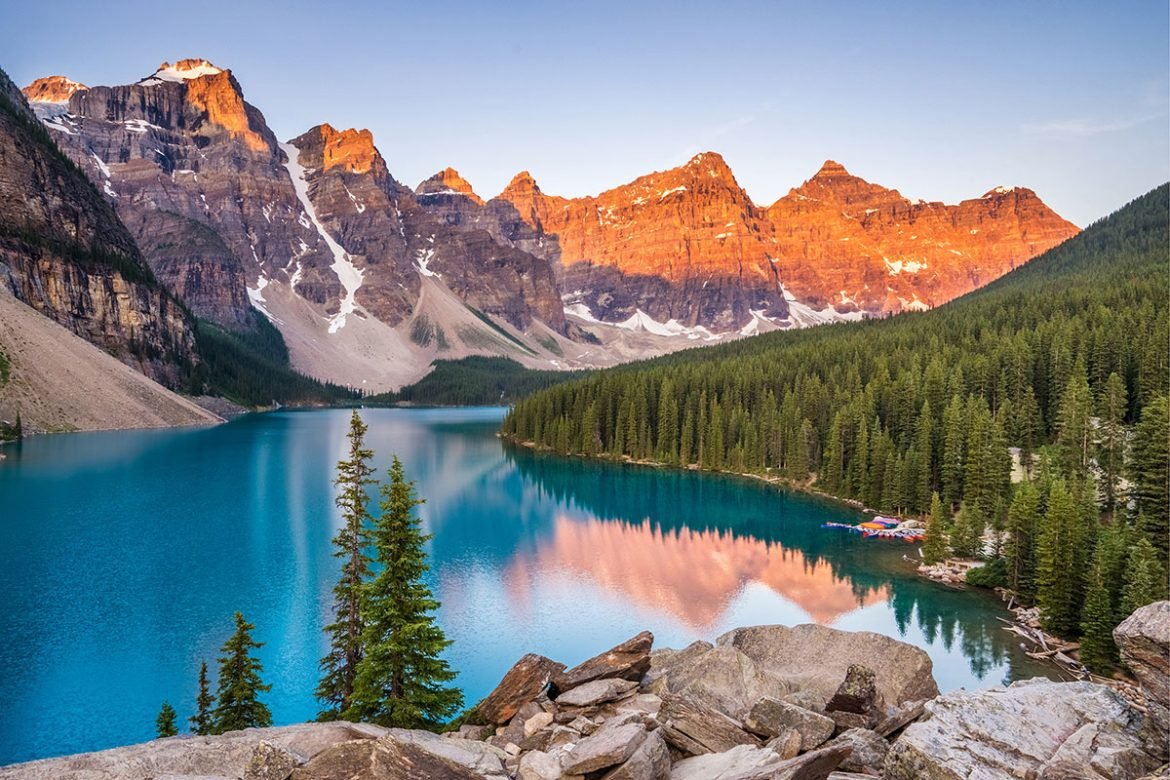Western Canada’s Alberta region has breathtaking landscapes, from wide-open grasslands to towering snowy peaks. Edmonton and Calgary, its two main cities, are both modern and frontier at the same time.
Alberta is a province that loves the arts and values its diverse cultural background by hosting many film and music festivals each year. Alberta is the place to be if you like the great outdoors in the winter or summer. And if you happen to be traveling with any aspiring paleontologists, they will be thrilled to see some of the most prolific dinosaur fossil beds on the planet. Highlights of the finest that Alberta has to offer as a tourist destination:
10. Lethbridge
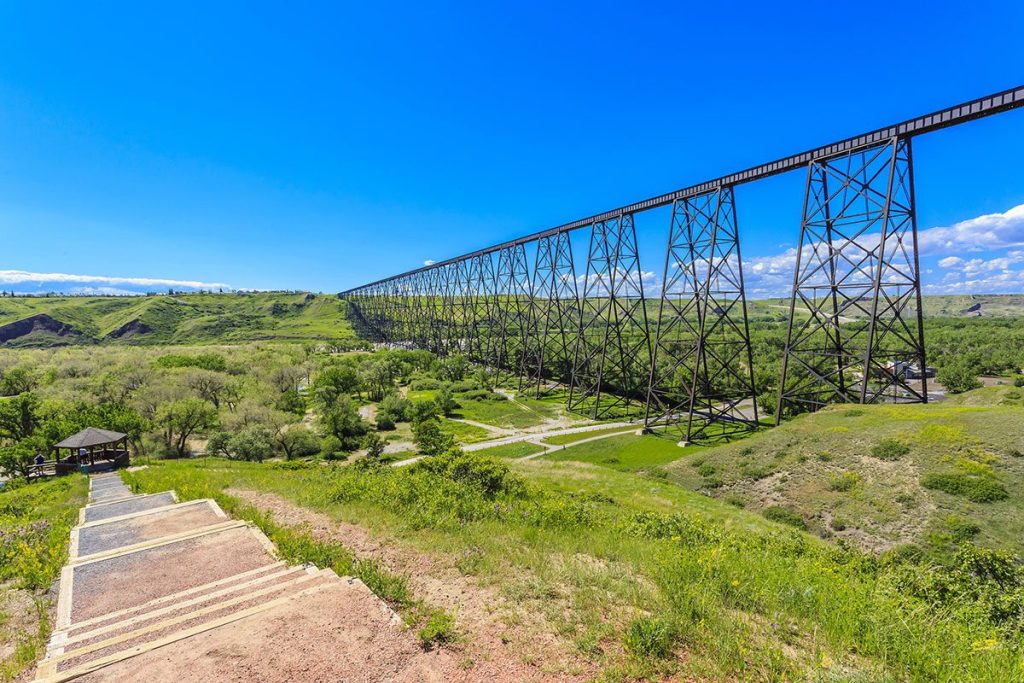
A beautiful sunset view of Lethbridge, Alberta, Canada. Image source: Scott Prokop/Shutterstock.com
South central Alberta is home to the city of Lethbridge, which is at the base of the Canadian Rockies. Lethbridge, the region’s biggest city with 93,000 people, was once known as Fort Whoop-Up due to its association with criminal activities.
Because of its diverse population and commitment to showcasing cultural arts, it has been designated as a Canadian Cultural Capital. The modern Southern Alberta Art Gallery, the University of Lethbridge Art Gallery, and Casa, a community arts center, are the three most notable museums in the city. The town of Lethbridge, Alberta, is home to the world’s longest and tallest steel trestle bridge.
9. Drumheller

A breathtaking view of the rugged badlands landscape in Drumheller, Alberta, Canada. Image source: Ronnie Chua/Shutterstock.com
Visit Drumheller if you’re interested in history. Situated in the Red Deer River Valley, often called Dinosaur Valley, it is 110 kilometers (68 miles) northeast of Calgary. A 26-meter-tall (86-foot-tall) tyrannosaurus rex stands just to the south of town, and it is the biggest dinosaur in the world. There is a gigantic water fountain right next to it, which is considered to be one of the largest in all of Canada.
Canada is home to some of the world’s most impressive fossil collections, including the Royal Tyrrell Museum of Paleontology, where you can discover even more about prehistoric creatures. Dinosaurs aren’t the only thing to see at Drumheller. Annually in July, the Canadian Badlands put on a Passion Play that draws a large crowd and is held just next to the ski slope.
8. Canmore
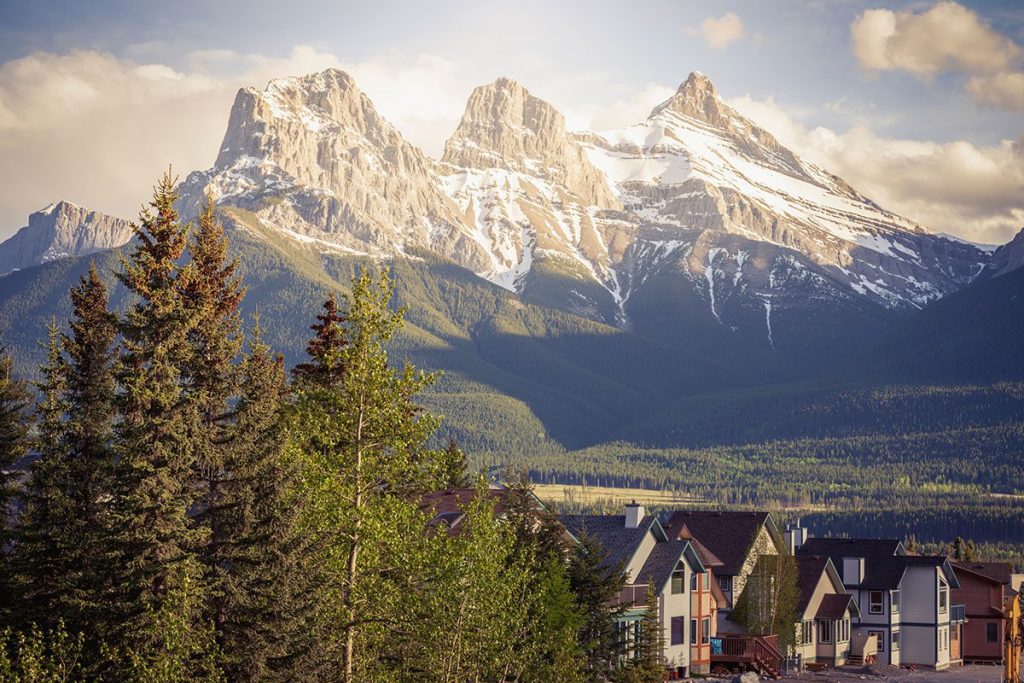
The Three Sisters, a trio of iconic peaks in Banff National Park. Image source: Henryk Sadura/Shutterstock.com
Located halfway between Calgary and Banff National Park, Canmore is a charming community. Malcolm III of Scotland, often known as “Canmore,” is honored with this name. The coal mining town became well-known when it played home to the 1988 Olympic Nordic events in Calgary.
There have been a number of films filmed at Canmore, some of which may be of interest to movie fans. These include Brokeback Mountain, Shanghai Noon, and the Assassination of Jesse James by the Coward Robert Ford. Accommodations in Canmore are cheaper, so it’s a good choice if you’re on a tight budget but still want to see the beauty of Banff and Lake Louise.
7. Waterton Lakes National Park
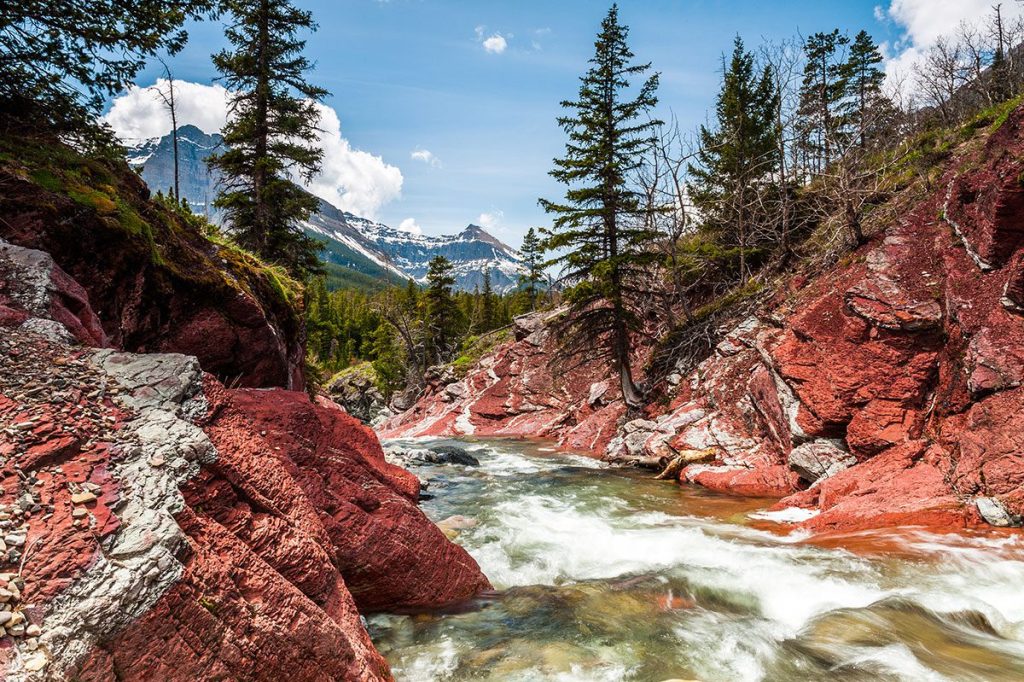
A serene view of Emerald Lake in Waterton Lakes National Park. Image source: Pierrette Guertin/Shutterstock.com
The Victorian naturalist Watertown inspired the naming of Waterton Lakes National Park, which was established in 1895. It may be found in southwestern Alberta, not far from the international boundary that separates it from Glacier National Park in Montana. The Waterton-Glacier International Peace Park is really jointly administered by the two parks.
Waterton Lakes, like its American counterpart, has miles of spectacular hiking paths across natural alpine landscapes. The Canadian Rockies have the deepest lakes in this region. Waterton Park town site is where you’ll find all of the park’s facilities, and it’s not uncommon to see deer strolling the streets like they own the area.
6. Edmonton
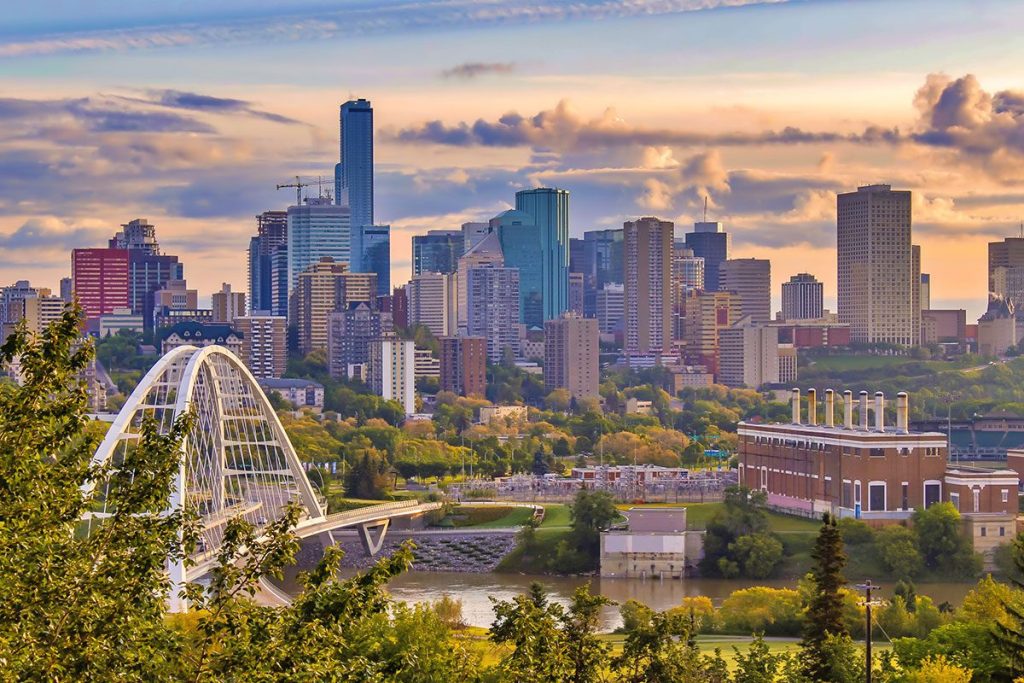
A colorful and lively view of the Edmonton skyline. Image source: LisaBourgeault/Shutterstock.com
Edmonton, the capital of Alberta, has a population of over a million, making it the northernmost major city in North America. The city formerly had the biggest shopping mall in North America, the West Edmonton Mall, but that title has since been passed on.
The term “Canada’s festival city” refers to Edmonton, which is well known for staging events all year round. K-Days, where the K stands for Klondike, are the main celebration there. Artists from all over the globe gather in July for an event dedicated to street entertainers. Edmonton also plays home to an international Fringe event that rivals Edinburgh’s in scale.
5. Dinosaur Provincial Park
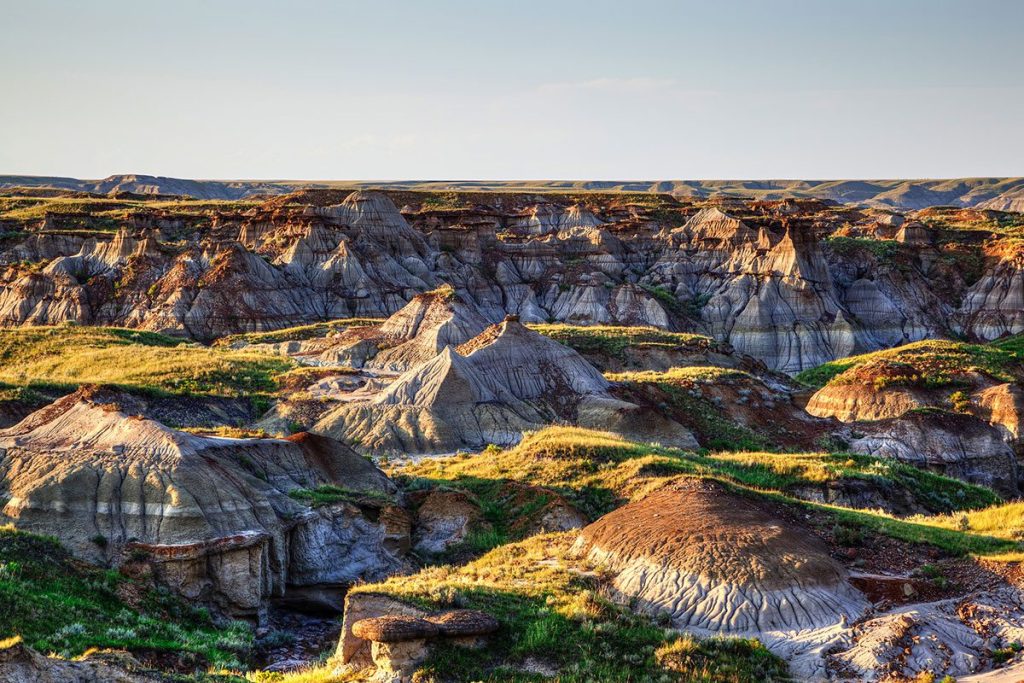
Dinosaur Provincial Park, Alberta, Canada. Image source: Ronnie Chua/Shutterstock.com
More than 40 different types of dinosaur fossils have been found at Dinosaur Provincial Park, making it a must-see for every dinosaur fan. Specimens uncovered here may be found in museums all over the globe, making this discovery one of the most significant discoveries of dinosaurs ever.
Besides dinosaurs, the park is a great area to see animals like coyotes, deer, and pronghorns, and even plant fossils. There are 165 kinds of birds in this area, including curlews and Canada geese. The home of the prominent African-American rancher, John Ware, may be found next to the tourist center.
4. Calgary
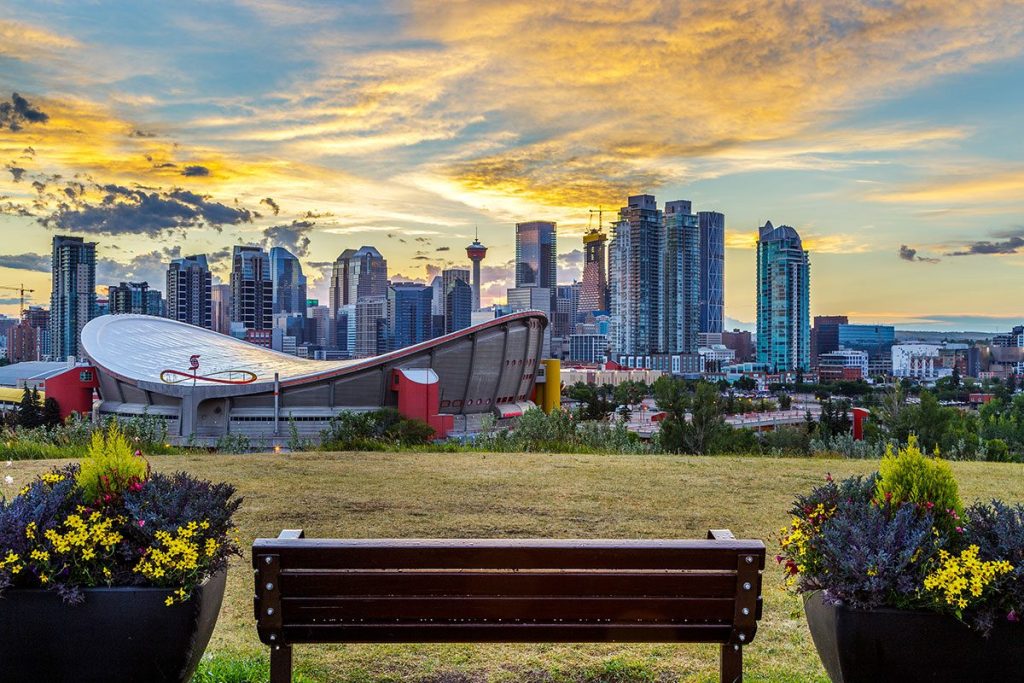
the downtown skyline of Calgary, Alberta, Canada. Image source: Mikhail Zapolskyi/Shutterstock.com
Calgary, situated at the junction of the Bow and Elbow rivers, is the most populous city in Alberta with 1.4 million residents. Called after a town on the Scottish island of Mull, Calgary was an important stop on the fur trade route through the Northwest.
Despite being the site of the 1988 Winter Olympics, Calgary is more well known as the location of the Calgary Stampede, one of the largest rodeos in North America. The cityscape is dominated by towering buildings, making for a dramatic visual. Calgary has a world-class performing arts facility at the Southern Alberta Jubilee Auditorium.
3. Elk Island National Park
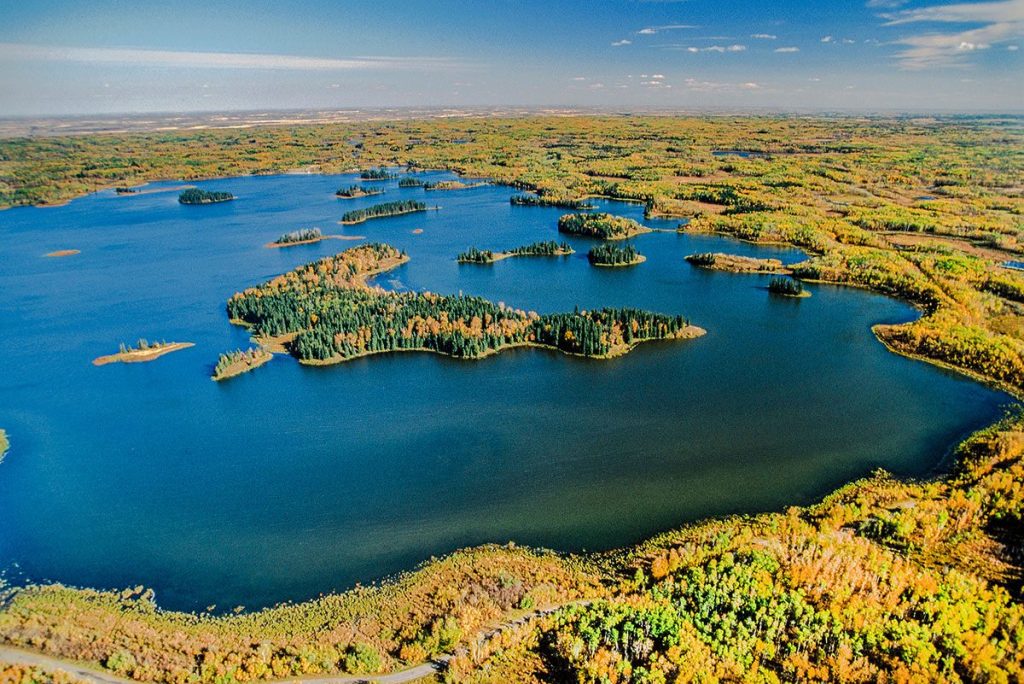
the beauty of Elk Island Park from a bird’s eye view. Image source: Russ Heinl/Shutterstock.com
It wasn’t always for the protection of elk that Elk Island was set aside as a national park; in fact, it wasn’t its original objective. It was founded a little over 30 kilometers (20 miles) from Edmonton with the goal of protecting bison. Though it has more land than any other national park in Canada, this one is smaller than the country’s biggest.
Deer, beaver, coyotes, and even lynx have been seen in the area, along with elk, moose, and bison. There are wolves and black bears in the park, although tourists seldom encounter them. There are many opportunities for outdoor fun, whether in the winter or summer. The Ukrainian Pioneer Home, the first Canadian museum devoted to Ukrainian immigrants, is located inside the park’s boundaries.
2. Jasper National Park
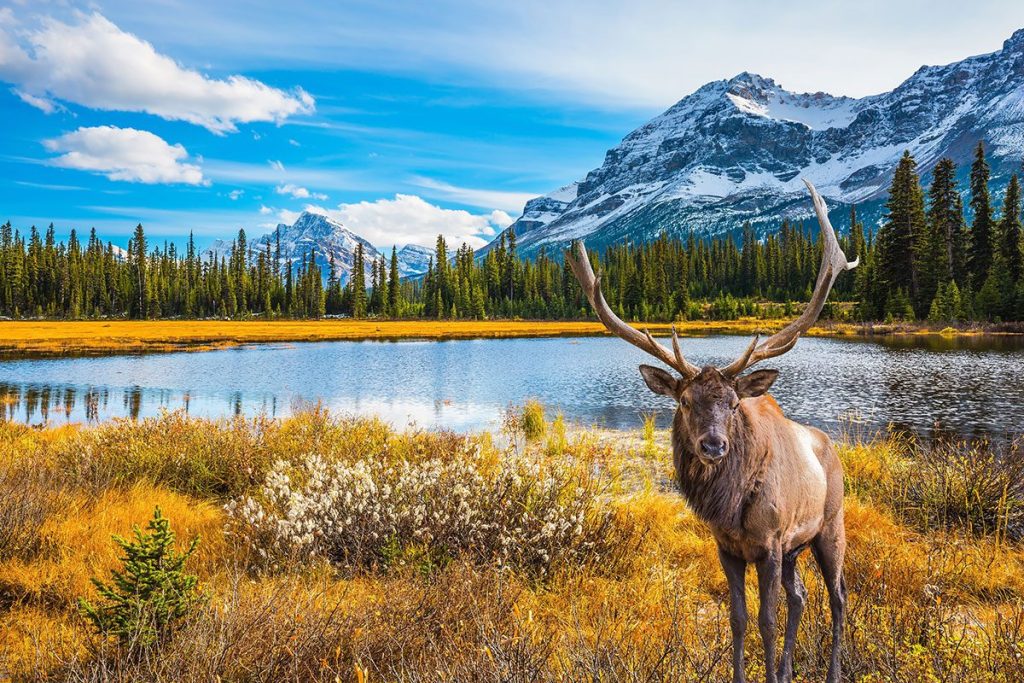
the stunning natural beauty of Jasper National Park in Alberta, Canada. Image source: kavram/Shutterstock.com
Jasper National Park in Alberta is where you should go to experience incredible glacier landscapes. The park contains the Columbia Ice Fields, the biggest non-polar ice field in the world and the largest in the Rocky Mountains.
One may take a specialized vehicle out onto the ice fields, where they can then enjoy glacial waters and stroll on a glass-floored skywalk out over the glacier. Wildlife such as moose, caribou, deer, wolverines, and grizzly bears may be seen at Jasper National Park, the biggest national park in the Canadian Rockies.
1. Banff National Park
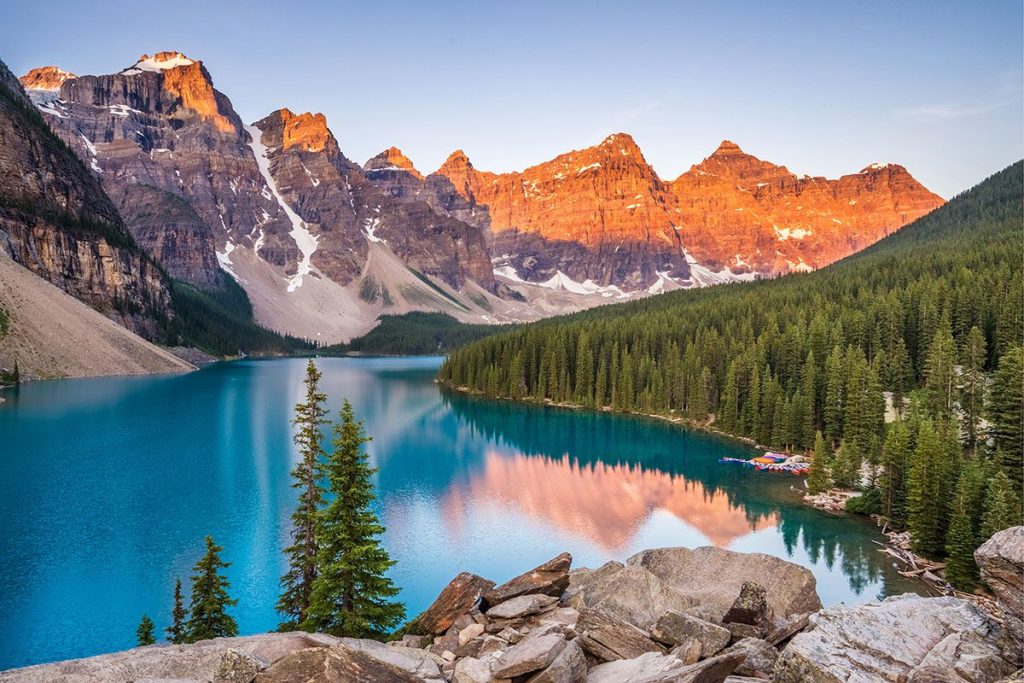
Moraine Lake in Banff National Park, Alberta, Canada. Image source: Rowan Sims Photography/Shutterstock.com
There is no shortage of stunning landscapes in Alberta, but Banff National Park is really unparalleled. Lake Louise, with its crystal-clear blue glacial waters, is without a doubt the crown jewel of Canada’s first national park. Located beside the famous Lake Louise, the equally stunning Moraine Lane may also be included on the Canadian $20 note.
Visitors of all seasons flock to the park, from summer hikers to winter skiers. A yearly winter carnival is held in Banff, a town inside the park. Around three million visitors come to the park every year.


